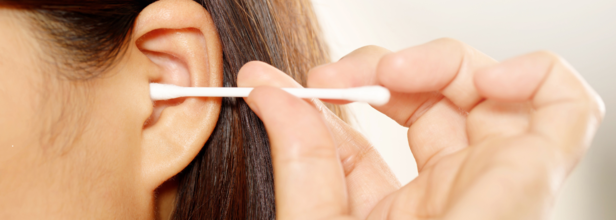- Health Conditions A-Z
- Health & Wellness
- Nutrition
- Fitness
- Health News
- Ayurveda
- Videos
- Medicine A-Z
- Parenting
- Web Stories
Teen Girl Guide To Menstrual Health: Why You Still Might Be Confusing Your Vulva With Your Vagina

Credits: HealthandMe
As a teenager, I was caught completely off guard the day I discovered blood in my underwear. My first thought wasn’t, “I’ve started my period,” but rather, “Did I somehow injure myself?” I remember feeling a wave of confusion and embarrassment, unsure whether to tell anyone or just hope it would stop. No one had ever explained to me what a period would look or feel like, or even when to expect it. I didn’t know that this moment, so bewildering and private, was a universal milestone for half the population. Only later did I realize how common my confusion was—and how much it reflected a broader lack of education about our own bodies.
Today, many teenage girls are still left equally confused. A growing body of research reveals a startling truth: teenage girls often can’t tell the difference between their vulva and vagina, nor do they fully understand their menstrual cycles. This gap in knowledge isn’t just awkward or inconvenient—it can have serious implications for their physical, emotional, and reproductive health.
Understanding the menstrual cycle and the anatomy of the female genitalia is not just about biology—it’s a foundation for lifelong health. For girls, women, and all people who menstruate, knowing how ovulation and periods work is essential. The menstrual cycle serves as a key indicator of overall health, and problems such as pain, heavy bleeding, or mood swings are not only common, but can lead to missed school, avoidance of sports, and even mental health challenges.
Anatomy 101: Vulva vs. Vagina
One of the most comoon misunderstandings is the confusion between the vulva and the vagina. The vulva refers to the external genitalia—the mons pubis, labia majora and minora, clitoris, urethral opening, and vaginal opening—while the vagina is the internal muscular tube that connects the vulva to the cervix. Despite this, “vagina” is often used as a catch-all term, even though most people are actually referring to the vulva.
This confusion isn’t trivial, many girls and women have little awareness of their vulval anatomy, which can lead to unnecessary anxiety about what’s “normal.” The labia, for example, can vary dramatically in size, shape, and color, especially during puberty. The clitoris, a highly sensitive organ essential for sexual arousal, is often overlooked or misunderstood. Even the hymen, still shrouded in myths about virginity, can take many forms—and its appearance says nothing about sexual activity.
Sadly, this confusion is compounded by the lack of proper anatomical education in schools and an overwhelming culture of silence or shame around female genitalia. Even digital period trackers have failed to bridge the knowledge gap. Research shows girls using period tracking apps are no more likely to know how their menstrual cycle works than those who don’t.
Despite its importance, vulval anatomy remains widely misunderstood—even among those who live with it. The vulva, the external part of female genitalia, is often incorrectly called the vagina. The vagina is in fact the internal canal leading to the cervix. The clitoris, urethral opening, labia majora and minora, and vaginal opening are all parts of the vulva, each with distinct roles and physiological importance. These structures also undergo changes during puberty that most girls are never taught to observe or understand.
Puberty brings dramatic changes to the vulva, most of which happen quietly, overshadowed by more visible developments like breast growth or height. Under the influence of hormones like estrogen, the skin of the vulva thickens and becomes more elastic, pubic hair develops, and the labia minora may grow quickly—sometimes unevenly, causing concern for girls and their parents.
It’s important to know that these changes are normal. The labia minora, for instance, may be long or short, pink or brown, smooth or wrinkled. There is no single “right” way for vulvas to look. Unfortunately, the rise of social media and online pornography has fueled unrealistic beauty standards, leading some teenagers to seek labiaplasty (surgical alteration of the labia) for purely cosmetic reasons. Medical experts strongly advise against such procedures in teenagers, as the labia are still developing and surgery can interfere with sexual function and self-acceptance.
In recent years, rising rates of labiaplasty—a cosmetic surgery that alters the labia minora—among teenagers are raising concern. The trend is largely driven by unrealistic beauty standards, social media filters, and exposure to pornography. In 2019 alone, 165,000 procedures were performed globally. Medical organizations now strongly advise against such surgeries in minors, noting the risks to sexual function, complications, and the natural changes still ongoing during puberty.
What Is Menstrual Cycle?
Menstruation, commonly known as having a period, is much more than monthly bleeding. It’s the body’s way of preparing for pregnancy: ovulating (releasing an egg) and building up the uterine lining. If pregnancy doesn’t occur, the lining is shed as menstrual blood.
The average age for a first period is around 12, but it can happen earlier or later. Early periods are often irregular, with cycles ranging from three to eight days of bleeding and intervals that may not settle into a predictable pattern for several years. Over time, most people’s cycles become more regular, averaging about 28 days from the first day of one period to the next.
Signs Your Period Is Coming
Puberty brings a series of changes that signal a period is on the way: breast development, pubic and underarm hair, white vaginal discharge, and sometimes cramping or bloating. Genetics play a role, so the age your mother or older sister started menstruating can be a clue.
When your first period arrives, it’s important to have supplies—pads or tampons—on hand. Many start with pads and switch to tampons when they feel more comfortable. Changing these regularly is crucial for hygiene and comfort. Since first periods can be unpredictable, carrying a spare pad or change of clothes can help prevent embarrassment at school or in public.
Breast tenderness, pubic hair growth, white vaginal discharge, and abdominal cramping are typical signs that menstruation is around the corner. But unless someone is told these are normal, they’re more likely to feel anxiety than assurance.
The average age of menarche (the first period) is around 12, but it can range from 9 to 15. Once menstruation begins, it might be irregular for the first few years. Eventually, cycles settle into a pattern averaging 28 days.
Preparing for the First Period
Equipping girls with pads or tampons ahead of time, teaching them how to use these products, and offering supportive, non-judgmental information can make all the difference. When the first period arrives, it should be met with understanding, not fear.
Mothers, teachers, and healthcare providers need to actively dismantle taboos and create space for open, factual conversation. Young girls deserve more than whispered warnings—they need clarity, confidence, and care.
Given how central menstrual health is to half the population for decades of their lives, it seems obvious that schools would prioritize this education. Yet, research shows this is not the case. Many girls report poor menstrual health literacy, regardless of whether they attend single-sex or co-ed schools, or even schools with religious affiliations that emphasize fertility awareness.
When girls don’t understand their bodies, they may dismiss severe pain or heavy bleeding as “normal,” avoid seeking medical advice, or struggle to answer basic questions from healthcare providers. This can delay diagnoses of conditions like endometriosis or polycystic ovary syndrome, and perpetuate shame and secrecy around menstruation.
For parents, teachers, and healthcare providers, the message is clear: open, honest conversations about anatomy and the menstrual cycle are essential. By normalizing these discussions and providing accurate information, we can ensure that no girl feels lost, ashamed, or afraid when her period begins—or when she looks in the mirror and wonders if her body is “normal.”
Never Remove Ear Wax At Home, Say Audiologists, Know Why

Credits: Canva
Hearing loss isn't just an inconvenience—it can lead to serious social and emotional consequences. With devices blasting music directly into our ears and constant exposure to urban noise, protecting your hearing is more important than ever. Here's how to keep your ears healthy throughout your life.
Hearing Loss Isn’t Just for the Elderly
Many people think hearing problems come with old age. But the truth is, hearing health should be a lifelong priority. Early awareness and care can reduce long-term damage and stigma. Communication is key to our personal and professional lives, and struggling to hear can lead to frustration, embarrassment, and isolation.
Age and Its Effects on Hearing
While anyone can experience hearing issues, age is a major factor. Over 40% of people over 50 and more than 70% over 70 deal with some degree of hearing loss. Often, it creeps up slowly—people assume others are mumbling or blame background noise. It’s usually loved ones who first notice the issue, pointing out the loud television or constant requests to repeat themselves.
Noise Exposure Is a Growing Concern
In earlier decades, occupational noise was the biggest hearing threat. Today, it’s recreational noise—especially headphones and personal devices. Audio technology has improved so much that users can raise the volume dangerously high without noticing distortion. This makes it easier to cause long-term harm to hearing.
Protect Your Ears in Loud Environments
Noise above 85 decibels—think concerts, clubs, or power tools—can damage your ears quickly. Earplugs are a simple and effective solution. Special musician-grade options preserve sound quality while reducing volume. Custom earplugs are also available for frequent concertgoers or those in loud work environments.
Use Headphones Wisely
Personal audio devices should be used with caution. Experts recommend the 50/50 or 60/60 rule: keep volume at 50–60% and limit use to 50–60 minutes at a stretch. Noisy surroundings can tempt you to increase volume—resist the urge. Instead, consider noise-cancelling headphones or moving to a quieter area.
Get Your Hearing Tested
Many people live with undiagnosed hearing loss for years. Fortunately, testing is easier than ever. Quick online hearing checks are available through trusted health organizations. If any issues are detected, follow up with a professional for a detailed evaluation.
Don’t Ignore Sudden Changes
If you wake up with severe hearing loss in one ear, or experience repeated infections, seek medical attention promptly. Inflammation in the inner ear can cause lasting damage if left untreated. Sometimes, steroids can help if administered quickly.
Respect the Role of Earwax
Earwax is often misunderstood. Far from being a sign of poor hygiene, it protects and moisturizes the ear canal. Avoid using cotton buds, which can cause irritation or push wax deeper. Let wax exit naturally or have it removed professionally if needed.
When to Consider Hearing Aids
Modern hearing aids are discreet, effective, and available through public health services in many areas. They help people stay socially connected, which is essential for mental health and healthy aging.
World Vitiligo Day- Do You Know Michael Jackson Had Vitiligo And His Death Played A Crucial Role In Spreading Awareness About The Condition?

(Credit - Michealjackson/Instragram)
Observed as World Vitiligo Day, 25th June is a day we celebrate and spread awareness about the vitiligo community. Started in 2011, this day was highlighted to support people who have this condition and spread awareness about it. According to Yale medicine, vitiligo is a disease that causes patches of skin to lose color, causing white spots. There is a lot of stigma around the condition and Yale Medicine experts have shared how vitiligo patients are often treated as ‘untouchables’, due to general lack of awareness.
An interesting fact about this skin condition is that many people started learning about it and understanding the nuances of the disease due to the public figures who opened up about it. Most notably, Micheal Jackson, who was under extreme scrutiny and suspicion for the change in his skin color. It wasn’t until his body autopsy report that people finally understood he had vitiligo and the extent of its impact.
The Micheal Jackson Effect
For years, people wondered why Michael Jackson's skin seemed to get lighter. He later confirmed that he had a skin condition called vitiligo. According to Vitiligo Clinic & Research Center, he publicly talked about it for the first time in a 1993 interview with Oprah Winfrey. He explained that his skin started changing around 1982, when he was about 24, and by the time of the interview, it had been progressing for about 10 years.
Vitiligo can indeed cause someone to lose most or all of their skin color, making them appear very white. However, this is rare and usually takes many years, with spots appearing gradually. So, it's unlikely that vitiligo alone caused his entire skin to turn so dramatically white.

Did Micheal Jackson Have Vitiligo?
There is a specific treatment for vitiligo that can remove any remaining dark pigment from the skin if a person has the condition. This treatment is a skin cream called monobenzone (also known as Benoquin). It's the only FDA-approved medication for this purpose for vitiligo. This cream doesn't typically work on people without vitiligo. It's a real vitiligo treatment for those who prefer to have an even, very light skin tone rather than a spotted appearance.
After his death, his autopsy report confirmed "patches of light and dark pigmented areas" on his skin, and vitiligo was noted in his medical records. Additionally, a tube of Benoquin cream was found among his medications, confirming he used this FDA-approved vitiligo treatment.
How Aware Are People About Vitiligo?
While Micheal Jackson may be the most known for this disease, there are other people who have this condition, like model and public figure Winnie Harlow. In a 2019 medical article published in the Journal of Clinical and Aesthetic Dermatology, the authors explained how awareness about diseases increases when a public figure goes through one. The authors explain the Micheal Jackson & Winnie Harlow Effect.
They conducted their research using Google Trends to see how often people searched for "vitiligo," "Michael Jackson," and "Winnie Harlow" all over the world from January 2004 to December 2018. Google Trends shows how popular certain search terms are over time and in different places.
The highest number of searches for vitiligo happened between June 28, 2009, and July 4, 2009, right after Michael Jackson passed away on June 25, 2009. This was the biggest surge in vitiligo searches in 14 years. His autopsy later confirmed he had vitiligo.
While his death caused a huge spike in vitiligo searches, it was hard to see a strong connection between him and vitiligo searches before or immediately after his death when compared directly. However, the overall impact of his passing on vitiligo searches was still very noticeable, especially when compared to other skin conditions during that time.

Celebrity Impact on Disease Awareness
The study explained that both Michael Jackson and Winnie Harlow are very well-known people who have had vitiligo. However, Michael Jackson mainly affected vitiligo searches after his death. After that peak, searches went back to normal levels. In contrast, Winnie Harlow is famous because of her vitiligo. She openly shows her skin patches, appears in public, and uses social media to encourage and support others with the condition. Vitiligo searches increase whenever she is in the news
Understanding Vitiligo – Can It Be Passed Down Genetically?
The Mayo Clinic explains that family history could play a part in vitiligo. If someone in your family has had vitiligo, it increases your chances of developing it significantly. Other factors include having an immune disorder, or going through a trigger event such as stress, severe burn or skin trauma, such as coming in contact with a certain chemical.
A 2018 Dermatology Clinic study concluded that it is an autoimmune disease in which the immune system mistakenly attacks healthy cells—in this case, melanocytes. There is a complex relationship between how the immune system is programmed, how melanocytes are targeted, and how the immune response becomes unregulated.
Common Myths About Vitiligo
Many medical professionals and researchers have been actively debunking common myths about the disease and helping people learn more about the skin condition. In a 2022 study published in the Journal of Clinical and Aesthetic Dermatology, the authors debunk common myths about the disease.
Myth 1: Vitiligo is More Common in People with Darker Skin
It's a common belief that vitiligo affects people with darker skin more often. However, this isn't true. While the white patches of vitiligo are much more noticeable on darker skin, the condition affects people of all skin tones at similar rates.
Myth 2: Vitiligo Only Affects Adults
Many people think vitiligo is mainly an adult condition, but that's incorrect. Nearly half of all people who get vitiligo develop it before they turn 20 years old.
Myth 3: Mental Health Issues Are the Same for Vitiligo Patients and Others
This is a big myth. People with vitiligo are much more likely to experience anxiety and depression compared to those without the condition. For example, one study found that 62% of vitiligo patients suffered from depression or anxiety, compared to only 25% of healthy individuals.
Myth 4: Only People with Darker Skin Feel the Emotional Toll of Vitiligo
The emotional and social challenges of living with vitiligo affect everyone, no matter their skin color. While the overall emotional burden is similar across all patients, there can be some differences in what concerns them most.
Myth 5: All Body Areas Repigment at the Same Speed
Different parts of the body can regain color at different rates. Two main factors influence how quickly a vitiligo patch repigments. Areas that get more sun exposure tend to repigment faster. Areas with more hair follicles tend to repigment more quickly because hair follicles contain pigment-producing stem cells.
Heart Attack Symptom: This Unusual Pain That Travels From Chest To Arms, Especially In Women, Should Be Checked Out Immediately!

(Credit-Canva)
Heart attacks are more common than people realize, according to the Heart Organization, every 40 seconds in United States someone has an attack. This happens when the blood flow is restricted or completely cut off, unable to reach the heart muscle. This happens when there is a buildup of fat or cholesterol blocking the arteries. Even though it is the number one cause of death in women, they often chalk it up to acid reflux, the flu, or just symptoms of normal aging.
However, mistakes like this are not uncommon and sometimes, these misleading symptoms can significantly delay treatment. The National Health Service (NHS) notes that this serious condition can show up in various ways, including chest pain, dizziness, sweating, and breathlessness.
Dr. Chris Kelly, Chair of Cardiology at UNC Rex Hospital, highlighted three key indicators that require immediate medical attention at an emergency room. He specifically pointed out that one of these signs is less common and often mistaken for other illnesses.
A Primary Warning
Dr. Kelly says the most common sign of a heart attack is chest pain. People might describe it as pressure, tightness, fullness, or just an ache in the chest. If you feel any chest discomfort that doesn't get better after a few minutes, especially if it spreads to your shoulders, arms, or jaw, it's a very serious sign. If this happens, you need to get to an emergency room right away.
Sudden Shortness of Breath
Another important sign Dr. Kelly mentioned is a sudden feeling of being short of breath. He explained that if you're not doing anything active but feel like you've just run a long distance, it could mean your heart is struggling. This can cause fluid to build up in your lungs. If you suddenly feel this way, go straight to an emergency room to get checked out.
Unexpected Abdominal Pain and Nausea
A less common, but still serious, sign of a heart attack can be sudden belly pain along with nausea. Many things can cause these symptoms. However, Dr. Kelly advises being extra careful if you are over 50, have risks for heart disease, and suddenly feel belly pain and nausea, especially if you also just "don't feel right." This particular symptom is more common in women. If you experience this and it doesn't get better in a few minutes, head to the emergency room immediately.
Importance of Prompt Treatment
Dr. Kelly stressed that getting medical help as soon as possible is crucial for your heart. As heart doctors often say, "time is muscle." This means the faster you get to the emergency room, the better the chance your heart has to recover and work properly in the long run. He emphasized that it's always "better to be safe than sorry" and to seek help quickly.
The NHS also mentions that while chest pain is the most common heart attack symptom (and can sometimes feel like indigestion), other symptoms can happen without chest pain. These include shortness of breath, feeling or being sick, and pain in the back or jaw. If you think someone is having a heart attack, it's vital to call emergency services immediately, as quick action greatly improves their chances.
© 2024 Bennett, Coleman & Company Limited

